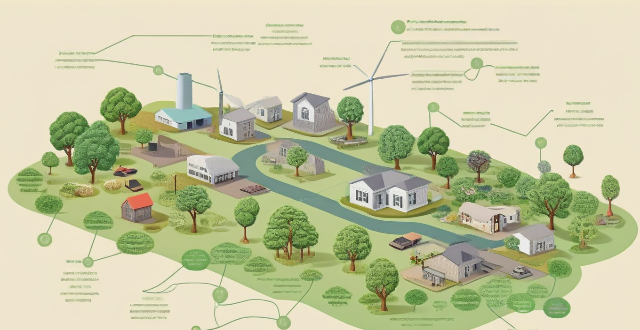Addressing climate change and poverty simultaneously requires a multifaceted approach that includes investing in renewable energy, promoting sustainable agriculture, implementing climate-resilient infrastructure, education and awareness, international cooperation, green economy initiatives, adapting to climate change, and social protection systems. By intertwining efforts to mitigate climate change with initiatives aimed at poverty alleviation, we can build a future that is both equitable and sustainable.

Addressing Climate Change and Poverty Concurrently
Addressing climate change and poverty simultaneously is a complex challenge that requires a multifaceted approach. Here's a detailed exploration of strategies that can be employed to tackle both issues in tandem:
1. Investing in Renewable Energy
- Creating Jobs: The renewable energy sector has significant potential for job creation, especially in rural areas where poverty is often most acute. This not only combats climate change but also provides a sustainable income for impoverished communities.
- Reducing Fossil Fuel Dependency: By reducing reliance on fossil fuels, we can decrease greenhouse gas emissions, leading to a healthier planet and reduced environmental degradation, which disproportionately affects the poor.
2. Promoting Sustainable Agriculture
- Enhancing Food Security: Sustainable farming techniques can improve crop yields, making food more accessible to impoverished populations while reducing the agricultural sector's carbon footprint.
- Supporting Smallholder Farmers: Providing training and resources to smallholder farmers can help them adopt climate-smart practices, ensuring their livelihoods are resilient against climate shocks.
3. Implementing Climate-Resilient Infrastructure
- Building Durable Housing: Ensuring housing is built to withstand extreme weather events protects the poorest, who often live in the most vulnerable structures.
- Improving Public Transportation: Investing in public transportation reduces individual carbon footprints and provides affordable transport options for low-income individuals.
4. Education and Awareness
- Climate Change Education: Educating populations about climate change and its impact can lead to more informed consumption choices and support for climate policies.
- Poverty Alleviation Programs: Integrating climate change education into poverty alleviation programs ensures that the poor are not only lifted out of poverty but are also equipped to handle climate-related challenges.
5. International Cooperation
- Sharing Technology and Resources: Wealthier nations sharing green technology and resources with developing countries can accelerate the transition to a low-carbon economy while lifting people out of poverty.
- Collaborative Research: International collaboration on research can lead to innovative solutions that address both climate change and poverty.
6. Green Economy Initiatives
- Incentivizing Green Businesses: Governments can provide incentives for businesses that prioritize sustainability, creating jobs that lift people out of poverty within an eco-friendly framework.
- Supporting Green Microfinance: Providing microfinance for green initiatives can empower impoverished entrepreneurs to start sustainable businesses.
7. Adapting to Climate Change
- Building Resilience: Adaptation measures such as improved water management and drought-resistant crops ensure that even as climate patterns shift, poor communities can maintain their livelihoods.
- Protecting Natural Buffers: Preserving wetlands and mangroves not only sequesters carbon but also protects coastal communities from storm surges, benefiting the environment and the poor alike.
8. Social Protection Systems
- Safety Nets: Establishing social protection systems like cash transfers or food assistance programs can safeguard the poor against climate-induced shocks like crop failures or extreme weather events.
- Healthcare Accessibility: Improving healthcare access ensures that the poor can cope with health issues exacerbated by climate change, such as waterborne diseases and heat stress.
In conclusion, addressing climate change and poverty together requires a comprehensive strategy that encompasses economic, environmental, and social dimensions. It's crucial to recognize that the effects of climate change disproportionately affect the poor, making concerted action on both fronts not just morally right but also practically smart. By intertwining efforts to mitigate climate change with initiatives aimed at poverty alleviation, we can build a future that is both equitable and sustainable.